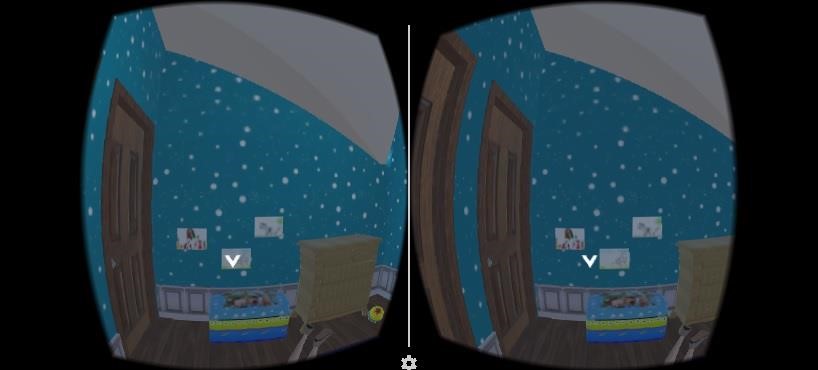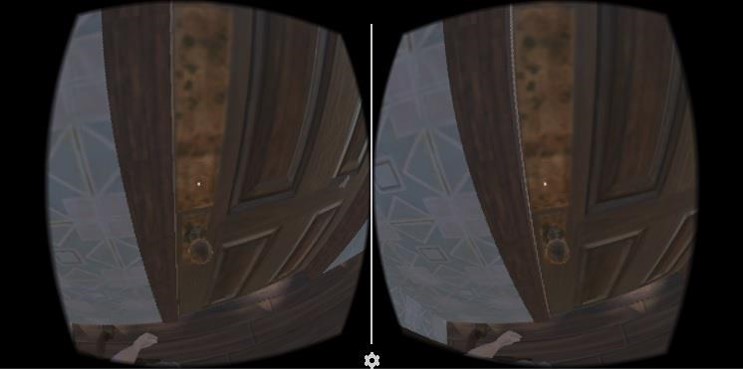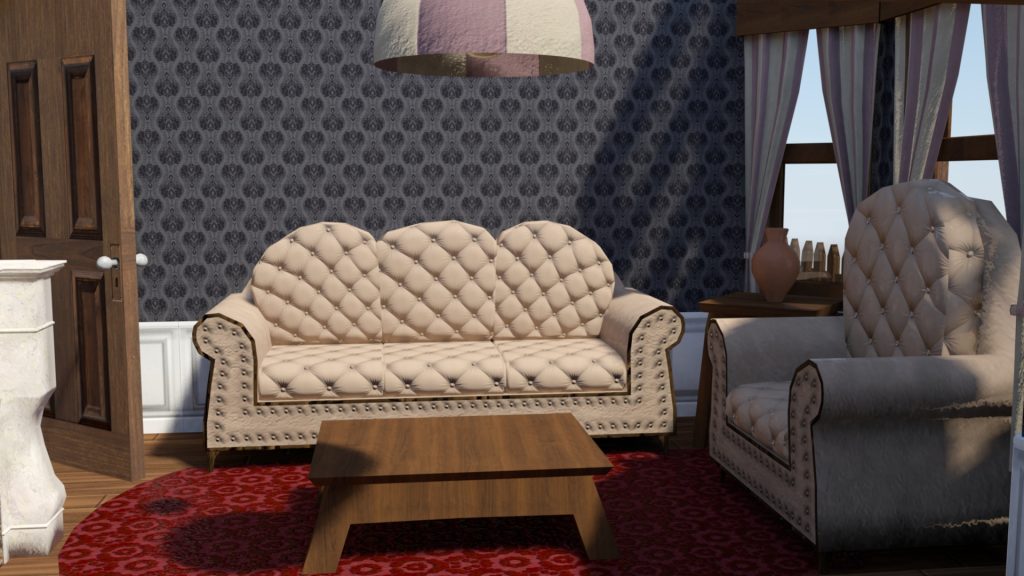Abstract
The cinema has undergone major changes throughout its history, from moving images, sound, colour, images synthesised by computer and 3D to the latest virtual reality systems such as virtual reality glasses with 360 degree environments.
In these 360 degree systems compared to traditional cinema, the narrative is impacted by the way someone experiences it. In this new universe the spectator is within the action and can enjoy all of its surroundings, so the director ceases to have control of some variables like time and space, and there is no telling when and where the spectator might is looking. This leads to the creation of a new technical approach to cinema, but also a new user experience.
In this dissertation I explore and propose ways to reduce and improve two of the major problems of these virtual reality systems. First, the spectator’s involvement problem towards the narrative, by promoting a greater sense of presence during its visualisation, so that the spectator feels more immersed with its surroundings. Secondly, the problem of the spectator’s focus of attention, so that the spectator is able to follow the narrative without feeling lost or getting distracted by its surroundings.
During my thesis I created and projected a short 3D animation on a virtual reality system. Its purpose was to compare the different perspectives of visualisation and possible focus points on the narrative to find out which of the experiments would be the most immersive and which would have better focus.
Research Problem
VR technologies have presented us with a breakthrough in innovation. As this technology becomes more mature and accessible it offers the possibility of entering an alternative world. This new world will be an alternative dimension between reality and the virtual world.
The focus was to understand what were the best visualisations and how to get a better focus on the event structure of the narrative and and on the style.
“… the conclusions of this convergence point more to an” illusion of interactivity “with history through access to representation and less to the much publicised Interactive co-authoring of the message.” (Zagalo 2007)
Zagalo concluded that the virtual reality cinema, that the approach should be more at the interactive representation level rather than interactivity with history. An interaction in which the stories are different and each person that interacts with them may not be the best way forward, since this interaction may jeopardise the reception of the story by its viewers.
This dissertation focused mainly on two research problems. The first, comes from the hypothesis that there is a lack of sense of presence in traditional cinema and how this is going to be tackled in virtual reality. The second is the difficulty of focus that these virtual reality systems present us in regards to the creation of movies in virtual reality.
“The results showed that actors experienced higher presence and realism, and enjoyed the VR experience more than observers did. Observers, on the other hand, experienced that external events distracted from their attention more than actors did.” (Larsson, Västfjäll, and Kleiner 2001)
In other words, the exploration of a 360º space can be somewhat more enriching, but at the same time cause difficulties in the tracking of the narrative.
With a greater involvement and greater freedom in these systems, it is also necessary to consider whether will be able to attend to the narrative, without losing parts or crucial moments of the same one. With this the following research questions:
- Is the involvement sufficient, so that the spectator can attend to the current story, without any breaks in the narrative?
- Will the focus have to be highlighted or even limited, compared to traditional cinema?
Goals and Hypothesis
Is it possible to give a greater sense of presence in 3D animation stories through specific camera views;
- Positive conjugation between the various thematic elements of the story;
- Greater involvement in the virtual world.
It is possible to gain a greater focus on the 3D animation stories presented in these systems, through focus suggestions.
- There is a greater interest from the part the spectator;
- Continuous and fluent narrative;
The main goal of this work is to develop an approach that is capable of promoting this positive conjugation between the various thematic elements of the story, without there being disinterest on the part of the spectator, combining a continuous and fluent narrative with a greater legitimacy in the virtual world In which we find ourselves inserted and thus make them more effective in the multidimensional context of RV cinema.
Thus, a brief review of the literature on the effect of emotion, focus, creation and communication of cinema and virtual reality will be presented, in order to hypothesise to interweave these two areas and create an even greater or similar immersion in VR.
In order for this knowledge to be useful, for potential creators of new stories in RV, a set of guidelines and good practices have also been created. These can be used, according to the paths outlined as possible of storytelling, which will be evaluated later by the director.
Investigation Methodology
Regarding the scientific approach, a study was made of the various artefacts between cinema and virtual reality, in order to study the best user experience in VR movie viewing. In this approach, the theoretical study had a greater incidence in the Techniques / aesthetics of each medium, to become possible to achieve a convergence of the different strands.
Initially, one of the aspects that would be addressed was the fact that the user had the option to change the view between characters, thus obtaining a different perspective and a more specific narrative within the same story. But what has happened, according to the author mentioned later, was that this approach might not be plausible. Thus, it was defined to focus only on the visualisations and the focus, the part of the plot (structure of events of the narrative), and the part of the style (non-diegetic forms of representation) and not so much in the fable (content of the story itself).
“… the conclusions of this convergence point more to an” illusion of interactivity “with history through access to representation and less to the so-called interactive co-authorship of the message” (Zagalo 2007)
With this, the author concluded that the cinema in virtual reality, should have an approach more at the level of interactive representation and not of interactivity with history, that is, an interaction in which the stories are different, on the part of each person that interacts With them, will not be the best way forward, since this interaction may put in question the reception of history by the spectators.
Test suites have been created and specified with users, through the prototype, to validate and delineate the quality of the techniques used and to determine the satisfaction of the users according to the different visualisation / focus proposals. This evaluation was based on the evaluation of (Zagalo 2007), in it’s analysis of the second convergence and was carried out through three strands:
-
As an observer, by the access in the third person, with a linear narrative, without any recognition of the spectator as present nor any clues of focus of attention, for the part of the scenario in which the story is going;
-
As an observer, by the access in the third person, with a linear narrative, focused through style, with some clues for the follow-up of the narrative;
-
As a single actor, with an interactive narrative, through the manipulations of the interaction with the Direct user control method, which influences the event structure of the same, serving as a stimulus to the focus of his attention.
These evaluations were performed using a visualisation metric and a questionnaire, which was divided into two parts. The first one, in order to evaluate the role of the subject in the surrounding history, if it feels more present and involved in history, acting as an observer or as an actor; And the second to evaluate the viewer’s focus on the narrative, whether or not there will be narrative breaks during their viewing
The visualisation metric was used to identify where the users were looking at a certain moment of the narrative and what the deviation of attention in relation to the space in which the narrative was developed, thus verifying if the spectator lost it or not, in some time in space.
The validation of the study of the presented solution was made through a case study. Sampling was analysed using statistical methods to support the research carried out.
Context
Going back to the roots of cinema, this has undergone major changes throughout it’s history. From moving images, sound, color, computer-integrated images and 3D. Méliès considered the father of science fiction cinema. Through special effects, he managed to surprise the audience visually and thereby captivate it.

There have been attempts to create new and better ways to captivate the public through immersion. Such as the virtual reality glasses technology, exploited technology in the twentieth century, that immerses itself in strength.
But at the time this system failed because they were pretty expensive. Nowadays they are lighter, more accurate and have more processing power.
Is VR the way to reach complete immersion?

Due to it’s recent exploration, this technology has not yet reached sufficient maturity there is still missing the knowledge of how to wrap viewers in the surroundings to cause greater immersiveness.
“Freedom is at the heart of VR, offering the experiencer virtual, virtually infinite space and time.” (Zagalo 2007).
According to Zagalo virtual reality gives us the freedom of exploration and offers us an alternative word. Although in virtual reality the director has no control of these variables of time and space.
How to reach immersion?
“Immersion is the experience of losing oneself in a fictional world. It’s what happens when people are not merely informed or entertained but actually slip into a manufactured reality.”
“Immersion takes place when the audience forgets that it’s an audience at all.” (Rose 2015)
Immersion is to get lost in a fictional world. It happens not when we are informed and entertained but when we fall into this reality. It takes place when the audience forgets that it is an audience.
Will focusing be hard?
The barriers between the experience and the person begin to become more and more tenuous. Virtual reality aims to break this barrier. Traditional cinema, for example, does not have any kind of physical connection or response to it.
“It is not enough to give the space an interactive access. It will be necessary to generate environments and narratives that provoke the transformation of a passive spectator into an active user and, simultaneously, into a subject involved in history. “(Zagalo 2007)
To focus the users we have to engage the subject further, stimulate their senses and also it is necessary to guide the user through the narrative.
Paradigms used
1st Display:
- Observer;
- Third person access;
- Linear narrative;
- No clues of attention focus.

2nd Display:
- Actor;
- First person access;
- Linear narrative;
- With clues of attention focus through style.

3rd Display:
- Actor;
- Third person access;
- Interactive narrative;
- With clues of attention focus thought interaction.

Conclusion
Cinema has not only seized the VR as it promises a greater involvement of the spectators in the stories. What distinguished cinema from Virtual Reality from the other is interactivity.
Technology is no longer a tool in which the user connects to a specific reality, it has become a reality in which the spectator will live.
- The interpretation of a character allows a greater involvement of the spectator at the level of presence;
- But we still need to take into account the problems that still exist. Like the exorcist effect where you can turn more than your head should.
- The interaction allows a good conjugation with the animation in the virtual reality;
- Some aspects to improve:
- Optimize target visualization.
- An interactive narrative optimizes your potential.
- Some aspects to improve:
- Match the experiences to what the director intends to convey.
Prototype
The prototype was made using Autodesk Maya for the modelling texturing and animation. For the lip sync animation it was used Annosoft software. As a development tool it was used unity. And the distribution was made for Google Cardboard.







Thank you
If you’ve made it this far, thanks for reading. I hope this gave you a peek into my design thinking and how I rationalize my decisions, as well as the way I work. Please leave a like or share to show your appreciation.





Leave a Reply
You must be logged in to post a comment.